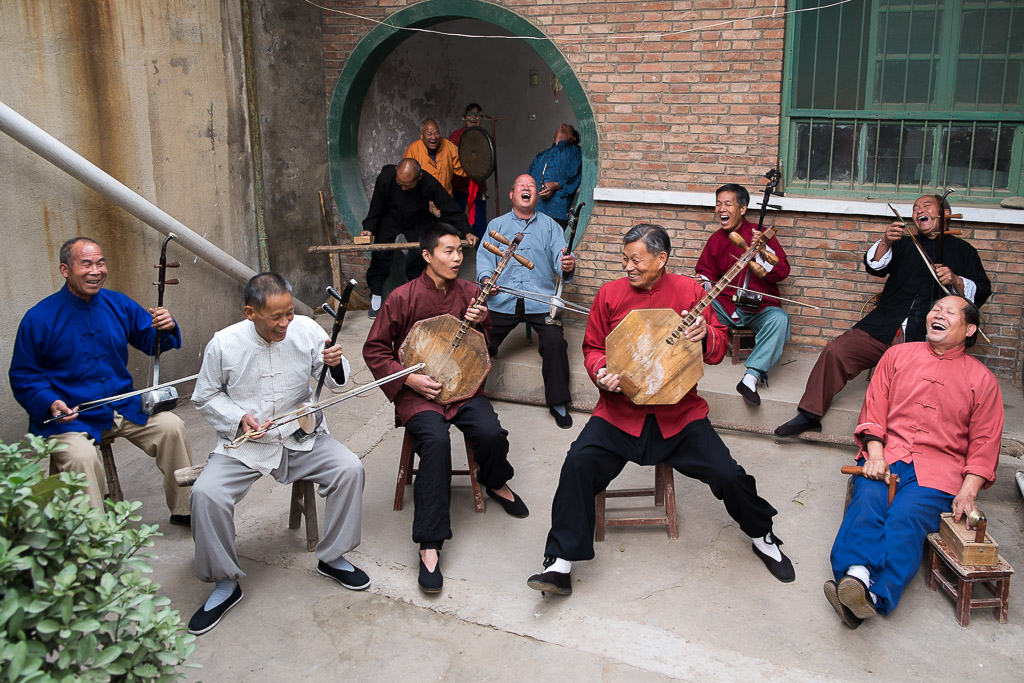Gala rejuvenates Huayin Lao Qiang heritage

Dress rehearsal with Zhang Ximin (in red), a 10th generation Lao Qiang artist responsible for teaching and spreading Huayin Lao Qiang
At the 2016 Spring Festival Gala, one performance included a style of singing known as Huayin Lao Qiang, which the gala merged with rock music in an innovative way.
The program, featuring folk artists and rock singer Tan Weiwei, integrated traditional opera and rock music, with elements of rural and urban culture, bringing the audience an unforgettable experience.
Lao Qiang, one genre of puppet theater, originated in the late Ming and early Qing dynasties in the city of Huayin, Shaanxi Province. To this day the city remains the center of this art, hence the name Huayin Lao Qiang.
Just five people are enough for a performance, including singers, puppeteers, musicians and prop managers. Each person has a distinct function. Though it is performed by a small group, every kind of character in a traditional opera is allowed in the performance. The special style meant the art form was included in the first national intangible culture heritage list in 2006.
Nevertheless, the performances of Huayin Lao Qiang have only spread across a small region so there is limited access to it. As a profession, its inheritance is restricted to the Zhang clan in that area and only male family members are allowed to learn it, which greatly restricted its passage across generations. Even today it more-or-less remains a regional art form within Huayin.
Due to a lack of innovation in musical accompaniments, lyrics, and forms, people may find the original Huayin Lao Qiang performance outmoded and hard to appreciate. The combination with rock music made it more familiar to the audience. People have been exposed to this ancient art form and may pay more attention to other intangible cultural heritage in the country. Therefore, this act has profound significance, serving as an example for promoting other forms of local cultural heritage.
However, while it produced a wonderful stage effect, this practice is not without its weaknesses. As a regional form of cultural heritage deeply rooted in local culture, the art form has developed specific formats and norms, which essentially amounted to restrictions that had to be bypassed to adapt it to a stage show. What’s even worse, the show may overshadow the cultural connotations of the original art form.
Whereas cultural inheritance doesn’t necessarily mean preserving the art in its original form, and combining with other cultural elements may be beneficial, the pursuit of entertainment and sensational effects is not the ultimate goal. The charm of an art form lies in its connection with the land that fostered the culture.
